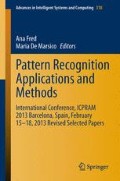Abstract
In this work we present a methodological approach of applying Artificial Neural Networks (ANN) for modeling of both the air temperature (AT) and relative humidity (RH) spatial and temporal distributions over complex terrains. A number of implementation issues are discussed, along with their relative advantages and limitations. Moreover, after the introduction of a set of metrics, the accuracy of the evaluation of ANN based spatial and time series AT and RH modeling in the case of a specific region is examined, by applying a number of alternative feed forward ANN topologies. The Levenberg-Marquardt back propagation algorithm was used for the ANNs training in the temporal forecasting of AT and RH, with the optimum architecture being the one that minimizes the Mean Absolute Error on the validation set. The Radial Basis Function and the Multilayer Perceptrons non-linear Feed Forward ANNs schemes are compared for the spatial estimation of AT and RH. We found that the spatial and temporal AT and RH variability over complex terrains can be modeled efficiently by ANNs.
Access this chapter
Tax calculation will be finalised at checkout
Purchases are for personal use only
References
Price, D.T., McKenney, D.W., Nalder, I.A., Hutchinson, M.F., Kesteven, J.L.: A comparison of two statistical methods for spatial interpolation of Canadian monthly mean climate data. Agric. For. Meteorol. 101(2–3), 81–94 (2000). doi:10.1016/S0168-1923(99)00169-0
Chai, H., Cheng, W., Zhou, C., Chen, X., Ma, X., Zhao, S.: Analysis and comparison of spatial interpolation methods for temperature data in Xinjiang Uygur autonomous region, China. Nat. Sci. 3(12), 999–1010 (2011). doi:10.4236/ns.2011.312125
Deligiorgi, D., Philippopoulos, K.: Spatial interpolation methodologies in urban air pollution modeling: application for the greater area of metropolitan Athens, Greece. In: Nejadkoorki, F. (ed.) Advanced Air Pollution. InTech Publishers, Rijeka (2011). doi:10.5772/17734
Deligiorgi, D., Philippopoulos, K., Kouroupetroglou, G.: Artificial neural network based methodologies for the estimation of wind speed. In: Cavallaro, F.F. (ed.) Assessment and Simulation Tools for Sustainable Energy Systems. Springer, Berlin (2013)
Snell, S., Gopal, S., Kaufmann, R.: Spatial Interpolation of surface air temperatures using artificial neural networks: evaluating their use for downscaling GCMs. J. Clim. 13(5), 886–895 (2000). doi:10.1175/1520-0442(2000)013<0886:SIOSAT>2.0.CO;2
Chronopoulos, K., Tsiros, I., Dimopoulos, I., Alvertos, N.: An application of artificial neural network models to estimate air temperature data in areas with sparse network of meteorological stations. J. Environ. Sci. Health Part A: Tox./Hazard. Subst. Environ. Eng. 43(14), 1752–1757 (2008). doi:10.1080/10934520802507621
Tasadduq, I., Rehman, S., Bubshait, K.: Application of neural networks for the prediction of hourly mean surface temperatures in Saudi Arabia. Renew. Energy 25(4), 545–554 (2002). doi:10.1016/S0960-1481(01)00082-9
Dombayc, O., Golcu, M.: Daily means ambient temperature prediction using artificial neural network method: a case study of Turkey. Renew. Energy 34(3), 1158–1161 (2009). doi:10.1016/j.renene.2008.07.007
Smith, B., Hoogenboom, G., McClendon, R.: Artificial neural networks for automated year-round temperature prediction. Comput. Electron. Agric. 68(1), 52–61 (2009). doi:10.1016/j.compag. 2009.04.003
Mustafaraj, G., Lowry, G., Chen, J.: Prediction of room temperature and relative humidity by autoregressive linear and nonlinear neural network models for an open office. Energy Build. 43(6), 1452–1460 (2011). doi:10.1016/j.enbuild.2011.02.007
Mihalakakou, G., Flocas, H., Santamouris, M., Helmis, C.: Application of neural networks to the simulation of the heat island over Athens, Greece, using synoptic types as a predictor. J. Appl. Meteorol. 41(5), 519–527 (2002). doi:10.1175/1520-0450(2002)041<519:AONNTT>2.0.CO;2
Fausett, L.V.: Fundamentals Neural Networks: Architecture, Algorithms, and Applications. Prentice-Hall Inc., New Jersey (1994)
Bishop, C.M.: Neural Networks For Pattern Recognition. Oxford University Press, Cambridge (1995)
Jain, A.K., Mao, J., Mohiuddin, K.M.: Artificial neural networks: a tutorial. Computer 29(3), 31–44 (1996). doi:10.1109/2.485891
Zhang, G.P., Patuwo, E., Hu, M.: Forecasting with artificial neural networks: the state of the art. Int. J. Forecast. 14(1), 35–62 (1998). doi:10.1016/S0169-2070(97)00044-7
Cybenco, G.: Approximation by superposition of a sigmoidal function. Math. Control Signals Syst. 2(4), 303–314 (1989). doi:10.1007/BF02551274
Hornik, K., Stinchcombe, M., White, H.: Multilayer feedforward networks are universal approximators. Neural Netw. 2(5), 359–366 (1989). doi:10.1016/0893-6080(89)90020-8
Rumelhart, D.E., Hinton, G.E., Williams, R.J.: Learning representations by back-propagating errors. Nature 323, 533–536 (1986). doi:10.1038/323533a0
Yu, H., Wilamowski, B.M.: Levenberg-Marquardt training. In: Wilamowski, B.M., Irwin, J.D. (eds.) Industrial Electronics Handbook, 2nd edn. CRC Press, Boca Raton (2011)
Fox, D.G.: Judging air quality model performance. Bull. Am. Meteorol. Soc. 62(5), 599–609 (1981). doi:10.1175/1520-0477(1981)062<0599:JAQMP>2.0.CO;2
Willmott, C.J.: Some comments on the evaluation of model performance. Bull. Am. Meteorol. Soc. 63(11), 1309–1313 (1982). doi:10.1175/1520-0477(1982)063<1309:SCOTEO>2.0.CO;2
Koletsis, I., Lagouvardos, K., Kotroni, V., Bartzokas, A.: The interaction of northern wind flow with the complex topography of Crete island-Part 1: observational study. Nat. Hazards Earth Syst. Sci. 9, 1845–1855 (2009). doi:10.5194/nhess-9-1845-2009
Koletsis, I., Lagouvardos, K., Kotroni, V., Bartzokas, A.: The interaction of northern wind flow with the complex topography of Crete island-Part 2: numerical study. Nat. Hazards Earth Syst. Sci. 10, 1115–1127 (2010). doi:10.5194/nhess-10-1115-2010
Kotroni, V., Lagouvardos, K., Lalas, D.: The effect of the island of Crete on the etesian winds over the Aegean sea. Q. J. R. Meteorol. Soc. 127(576), 1917–1937 (2001). doi:10.1002/qj.49712757604
Deligiorgi, D., Kolokotsa, D., Papakostas, T., Mantou, E.: Analysis of the wind field at the broader area of Chania, Crete. In: 3rd IASME/WSEAS International Conference on Energy, Environment and Sustainable Development, pp. 270–275. Agios Nikolaos, Crete: World Scientific and Engineering Academy and Society Press (2007). Retrieved from:http://www.wseas.us/e-rary/conferences/2007creteeeesd/papers/562-194.pdf
Gardner, M.W., Dorling, S.R.: Artificial neural networks (the multilayer perceptron)—a review of applications in the atmospheric sciences. Atmos. Environ. 32(14–15), 2627–2636 (1998). doi:10.1016/S1352-2310(97)00447-0
Heaton, J.: Introduction to Neural Networks with Java. Heaton Research Inc, Chesterfield (2005)
Powel, M.J.D.: Radial basis functions for multivariable interpolation: a review. In: Mason, J.C., Cox, M.G. (eds.) Algorithms for Approximation. Clarendon Press, Oxford (1987)
Author information
Authors and Affiliations
Corresponding author
Editor information
Editors and Affiliations
Rights and permissions
Copyright information
© 2015 Springer International Publishing Switzerland
About this paper
Cite this paper
Philippopoulos, K., Deligiorgi, D., Kouroupetroglou, G. (2015). Artificial Neural Network Modeling of Relative Humidity and Air Temperature Spatial and Temporal Distributions Over Complex Terrains. In: Fred, A., De Marsico, M. (eds) Pattern Recognition Applications and Methods. Advances in Intelligent Systems and Computing, vol 318. Springer, Cham. https://doi.org/10.1007/978-3-319-12610-4_11
Download citation
DOI: https://doi.org/10.1007/978-3-319-12610-4_11
Published:
Publisher Name: Springer, Cham
Print ISBN: 978-3-319-12609-8
Online ISBN: 978-3-319-12610-4
eBook Packages: EngineeringEngineering (R0)

